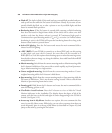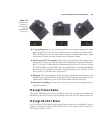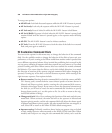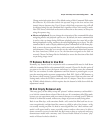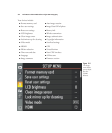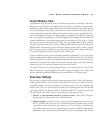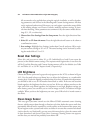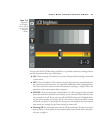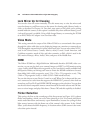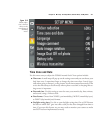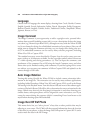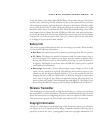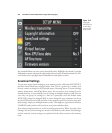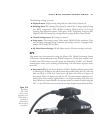AF-area modes to be applied when using the optical viewfinder, as well as bracket-
ing parameters, and choices in the Shooting and Custom Settings menus. All these
can be registered and retrieved. However, you can’t register a particular storage folder
or file naming scheme, nor Picture Controls, multiple exposure settings, or inter-
val timer shooting. Those parameters are common to all your camera mode dial set-
tings (U1, U2, or otherwise).
3. Choose Save User Settings from the Setup menu. Press the right directional but-
ton.
4. Select U1 or U2 from the menu. Press the right directional button to be taken to
a confirmation screen.
5. Save settings. Highlight Save Settings (rather than Cancel) and press OK to regis-
ter your current settings to U1 or U2. The stored settings can be retrieved by rotat-
ing the mode dial to U1 or U2.
Reset User Settings
Select this, and you can set either U1 or U2 (individually, or both if you repeat the
process) to the default camera settings. The exposure mode registered to a reset user slot
will be P, and the Shooting and Custom Settings menus will be the defaults (see Table
8.1 and Tables 9.1 to 9.6 in Chapters 8 and 9, respectively).
LCD Brightness
Choose this menu option and a grayscale strip appears on the LCD, as shown in Figure
10.2. Use the multi selector up/down keys to adjust the brightness to a comfortable
viewing level. Under the lighting conditions that exist when you make this adjustment,
you should be able to see all 10 swatches from black to white. If the two end swatches
blend together, the brightness has been set too low. If the two whitest swatches on the
right end of the strip blend together, the brightness is too high. Brighter settings use
more battery power, but can allow you to view an image on the LCD outdoors in bright
sunlight. When you have the brightness you want, press OK to lock it in and return to
the menu.
Clean Image Sensor
This entry gives you some control over the Nikon D7000’s automatic sensor cleaning
feature, which removes dust through a vibration cycle that shakes the sensor until dust,
presumably, falls off and is captured by a sticky surface at the bottom of the sensor area.
If you happen to take a picture and notice an artifact in an area that contains little detail
(such as the sky or a blank wall), you can access this menu choice, place the camera with
its base downward, and choose Clean Now. A message Cleaning Sensor now appears,
and the dust you noticed has probably been shaken off.
David Busch’s Nikon D7000 Guide to Digital SLR Photography314



